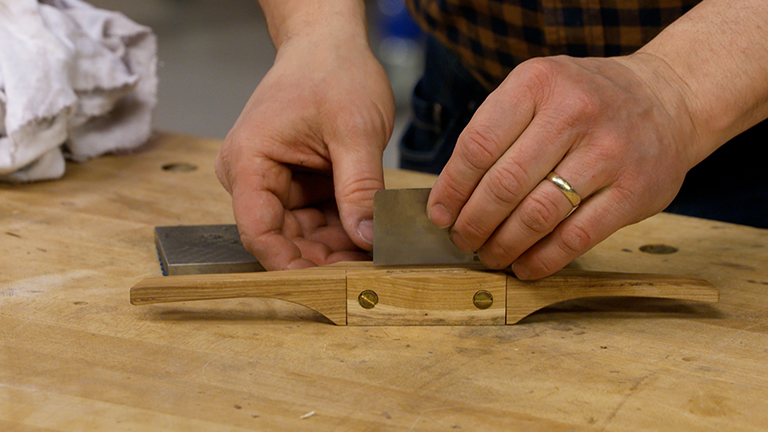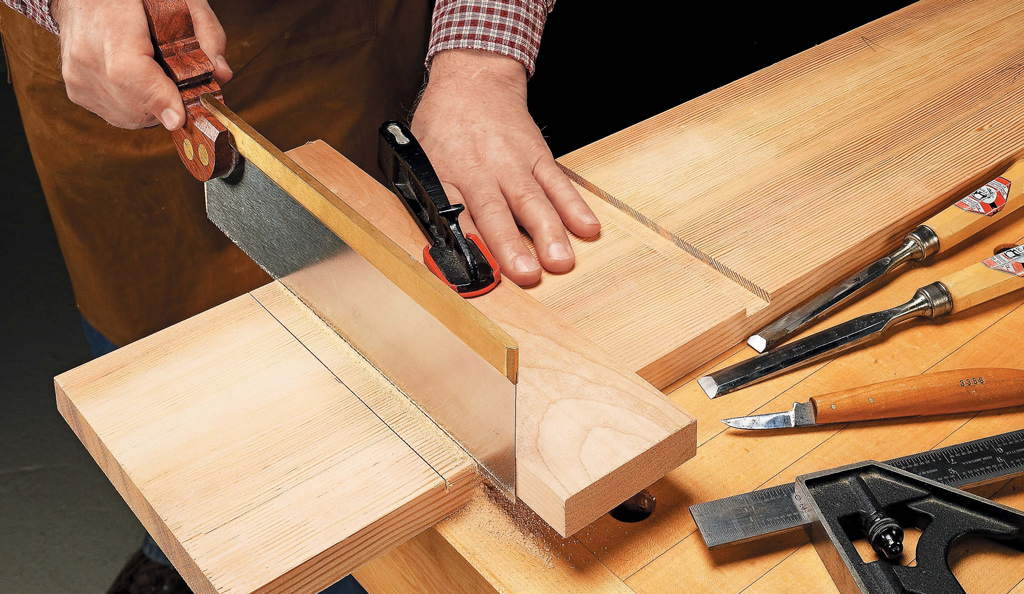
What I enjoy most about woodworking is the problem solving. Recently I've been doing some carving, bowls and fish mostly. In each case I've encountering some areas that are tough to reach with carving gouges because the shank of the gouge hits the work. After giving the matter some thought I realized that a small scorp would do the trick. A scorp cuts on the pull stroke so the blade can easily go into difficult areas such as the bottom of a bowl or the junction of the dorsal fins and the body of a fish. The design of the scorp I made loosely follows one that I had seen before with a single bar forming the shank and blade. Making the scorp began by drilling a 1/2" hole in a piece of 1/4" x 3/4" O-1 tool steel. This was followed by a few hours of sawing and filing the basic shape as well as rough grinding the cutting edge. Next up was a trip to the garage to put the bend in the shank. The heat came from an oxy-acetylene torch. The tool steel come in an annealed, or softened state, so the cutting edge needs to be hardened. Hardening and tempering O-1 steel isn't difficult. The area of the cutting edge is heated to a bright orange and plunged into oil. Oil is used because it cools the steel at a slower rate than water avoiding thermal shock and potential cracking. (Old metalworking books have some rather exotic recipes for quenching solutions.) The steel is pulled from the oil after a 5 count and the blade is rubbed with a sharpening stone. At this point the steel is too hard and lacks durability. It needs to be softened (tempered). Reserve heat from the balance of the metal flows back to the cutting edge and reveals itself in a color spectrum. Once the blade turns a straw color it is fully cooled in the oil and is ready for final polishing and sharpening. I spent a little time with fine sandpaper and at the buffing wheel to put a nice polish on the steel and then ground the cutting edge to its final shape. With the metal work done I made a simple Beech handle and glued the blade in place. After final sharpening the scorp was ready. It works great and does what I wanted but of course I see thing to try in future versions - less angle in the bend, different sizes, perhaps a shorter shank.











